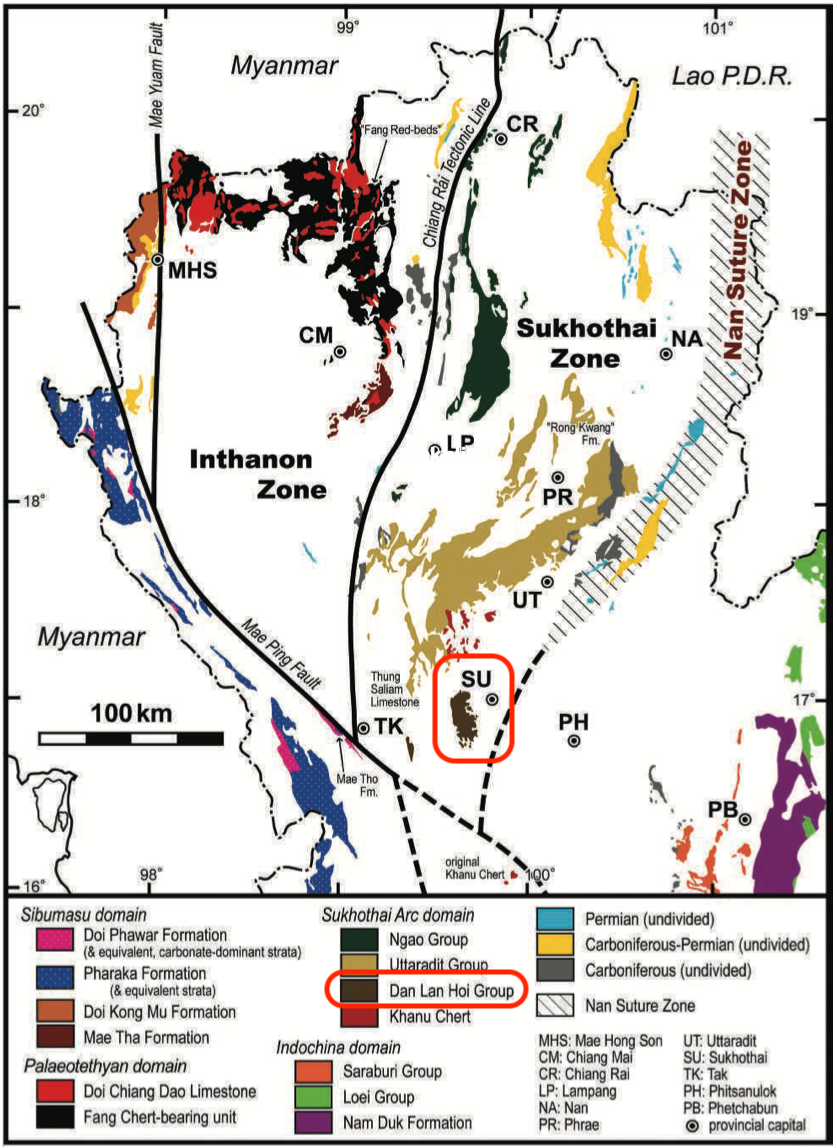Khao Khi Ma Fm
Type Locality and Naming
Type section: North-south trending ridge of Khao Khi Ma (from which the name of the for- mation was taken), south of Ban Dan Lan Hoi district, Sukhothai province. Parent unit: lower formation in Dan Lan Hoi Gr
Synonym: หมวดหินไพโรคลาสติกเขาขี้ม้า , Khao Khi Ma Pyroclastics
Lithology and Thickness
Tuffaceous, coarse-grained sandstone, shale and infrequent layers of graded-bedded, fine-grained agglomerate; agglomerate, mostly andesitic, with medium-sized clasts, with frequent intercalations of green tuff; poorly bedded, green agglomerate, with large clasts. The succession has at its base poorly sorted and weakly bedded greenish agglomerate about 150 m thick. This is overlain by andesitic agglomerate about 70 m thick with frequent intercalations of sandy and silty greenish tuff and succeeded by coarse tuffaceous sandstone and shale about 30 m thick, with frequent layers of graded agglomerate. Rocks of this formation exhibit well-developed slaty cleavage. Thickness: 250 m
Relationships and Distribution
Lower contact
The Khao Khi Ma Fm overlies the Silurian – Devonian Khao Khieo Tuf Fm of the ‘Thung Saliam Gr' (Now Sukhothai Gr) with angular unconformity at Khao Khi Ma (Bunopas 1981). Regionally, the next older unit might be the Thung Saliam Limestone Fm of Devonian.
Upper contact
Conformably overlain by the Lan Hoi Fm.
Regional extent
Correlation: Lower part of the Mae Tha Group, the Mae Sai Formation; Khao Ki Ma Formation
GeoJSON
Fossils
None
Age
Depositional setting
"The Khao Khi Ma Formation is considered to be a marine mass- flow deposit. Judging from the large volcaniclasts (up to 50 cm maximum size) contained in this formation, it is assumed to have been deposited close to its volcanic source. Bunopas (1981) suggested that these pyroclastic rocks were laid down in a submarine-fan environment, but further sedimentological work is necessary to confirm this." (Ueno & Charoentitirat, 2011)
Additional Information
Remarks: Ueno and Charoentitirat (2011) introduced the Khao Ki Ma Formation to replace the Khao Khi Ma Pyroclastic, with respect to nomenclatural guidelines
